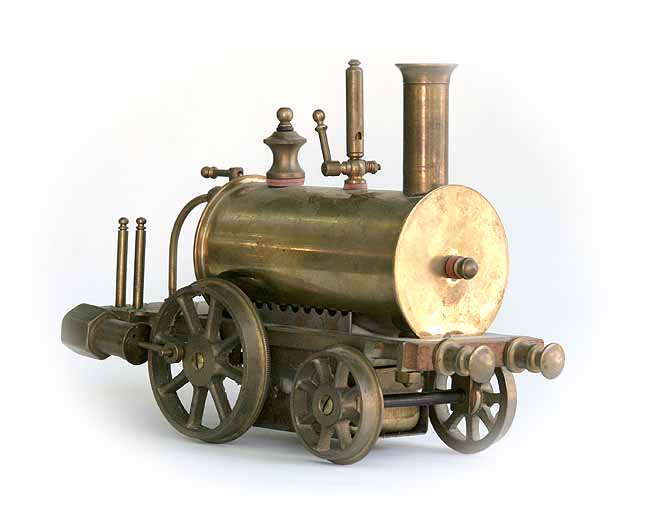
The history of model trains dates to the 19th century. In the beginning, model trains were made by hand, often out of wood, seeking a faithful reproduction of actual trains and tracks (Maxwell, 2023). However, over time, thanks to advances in technology, the first factory-made models appeared.
In the 1850s, the first widely available model trains appeared, named “Birmingham Dribblers” (Pollard, 2022). “Carpet railways,” as they were also called because of the absence of rails, were unsuitable for children due to their complex design and use of hazardous components (Pollard, 2022; Maxwell, 2023). The first ones used fuel-powered engines and had chimneys that produced steam while running, simultaneously splashing boiling water everywhere (Pollard, 2022). Over time, German manufacturers such as Märklin dominated the market, offering affordable, standardized models in the small scale we know today (Pollard, 2022). These toys, formerly exclusive to the upper classes, began to gain popularity among the wider public (Maxwell, 2023).

World War I caused a disruption in manufacturing. However, after the war, Frank Hornby, who was known for producing toys related to engineering, invented clockwork and later electric models (Pollard, 2022). This has led to the development of the OO scale model train “Dublo” in 1938, which appealed to both children and adults, marking the birth of model trains (Pollard, 2022). The imaginative world of model trains offered a chance to break away from the grim postwar reality (Maxwell, 2023).

During World War II, production stopped again, and shortly afterwards other plastic toys began to be mass-produced, which severely impacted the model train market and caused a decline in their popularity (Maxwell, 2023). However, the toys eventually came back in the late 20th century thanks to the use of new technologies such as digital control systems and a higher level of realism in their production (Maxwell, 2023). Creating constraint-free worlds was easier than ever.
Today, the largest and most popular model train set is Miniatur Wunderland. It was opened in 2001 by the Braun brothers in Hamburg, Germany (Miniatur Wunderland, n.d.b). While there, visitors can explore miniature versions of various cities, landscapes, and trains, where every detail is made with extreme care, and includes interactive elements such as moving vehicles and dynamic scenes, making the experience engaging. In 2019, the place was entered into the Guinness Book of World Records as the largest model train set in the world, having at the time 1,367.21 kilometers of “real length” (Miniatur Wunderland, n.d.c). As of today, this model train set continues to grow and expand in size, attracting more and more people (Miniatur Wunderland, n.d.a).
You can have a look at the set yourself by watching the video below.